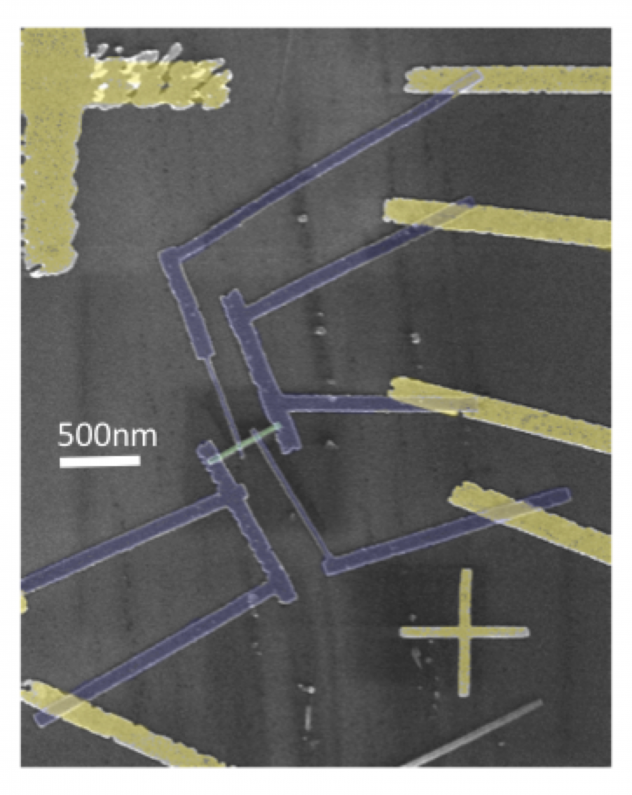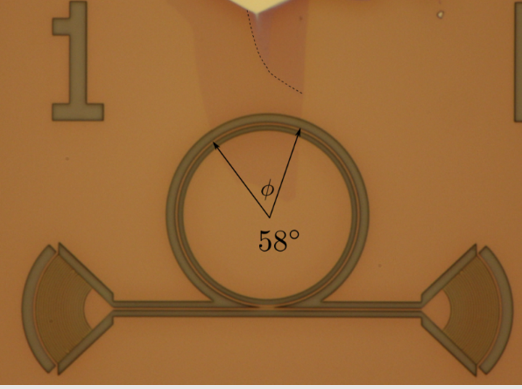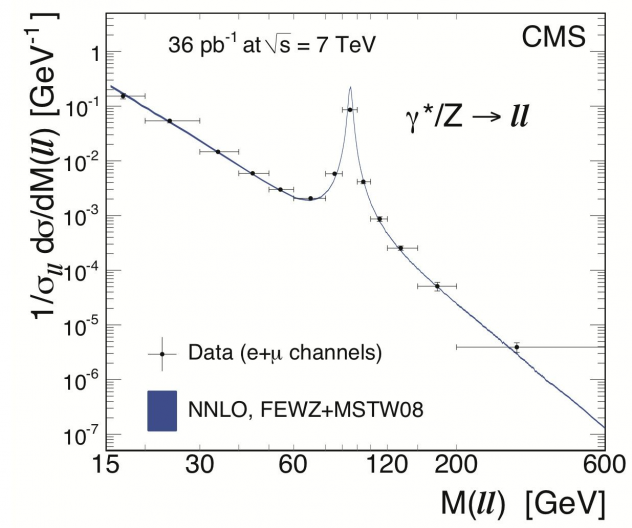Driscoll Lab
The Driscoll lab is an experimental soft matter physics lab – we focus on studying fluids and soft and squishy solids. Our main tools are high-speed photography and various kinds of light microscopy. We study how patterns & structures form when you try and pull these soft systems apart; an everyday example of this is the drips that form on a newly pain ted wall. The spacing between these drips encodes information about the strength of the pulling (gravity) vs. how strongly the paint is resisting it (viscosity & surface tension). The Driscoll lab’s theme is to look carefully at how things break apart to try understand what was holding them together. By developing a deeper understanding of the patterns and structures which emerge as a material fails, we can learn not only how to control these structures, but also how to use them to learn something new about the material.
ted wall. The spacing between these drips encodes information about the strength of the pulling (gravity) vs. how strongly the paint is resisting it (viscosity & surface tension). The Driscoll lab’s theme is to look carefully at how things break apart to try understand what was holding them together. By developing a deeper understanding of the patterns and structures which emerge as a material fails, we can learn not only how to control these structures, but also how to use them to learn something new about the material.
For more information, contact Professor Michelle Driscoll
Mesoscopic Physics Group
A primary interest of the Mesoscopic Physics Group is the properties of artificially fabricated sub-micron size structures that exhibit quantum effects. These structures are fabricated in the group using nanolithography techniques, and measure d at very low temperatures (<1 degree above absolute zero). Recently, our focus has been on so-called van der Waals materials, crystals whose layers are held together by very weak van der Waals’ forces. Due to the weak forces holding together the different layers, they can be easily separated into two-dimensional films only a few atoms thick. The best known among these materials is graphene, a single layer of carbon atoms that can be separated from graphite crystals, but our interest is now in more materials like MoS2 and WSe2 that may show exotic quantum properties. In order to measure these properties, one needs to make electrical contacts to the film using a technique called electron-beam lithography. The figure shows an example of a thin film of PtTe2 (green) that was mechanically exfoliated using the “Scotch tape” technique onto an Si/SiO2 wafer. It was then patterned into a narrow line using electron-beam lithography. Subsequent nanolithography steps were used to put down Al wires (blue) that go superconducting below 1 Kelvin, and larger gold wires (yellow) in order to make electrical measurements. This project would involve fabricating devices such as the one shown in the figure using mechanical exfoliation techniques and electron-beam lithography.
d at very low temperatures (<1 degree above absolute zero). Recently, our focus has been on so-called van der Waals materials, crystals whose layers are held together by very weak van der Waals’ forces. Due to the weak forces holding together the different layers, they can be easily separated into two-dimensional films only a few atoms thick. The best known among these materials is graphene, a single layer of carbon atoms that can be separated from graphite crystals, but our interest is now in more materials like MoS2 and WSe2 that may show exotic quantum properties. In order to measure these properties, one needs to make electrical contacts to the film using a technique called electron-beam lithography. The figure shows an example of a thin film of PtTe2 (green) that was mechanically exfoliated using the “Scotch tape” technique onto an Si/SiO2 wafer. It was then patterned into a narrow line using electron-beam lithography. Subsequent nanolithography steps were used to put down Al wires (blue) that go superconducting below 1 Kelvin, and larger gold wires (yellow) in order to make electrical measurements. This project would involve fabricating devices such as the one shown in the figure using mechanical exfoliation techniques and electron-beam lithography.
For further information, contact Venkat Chandrasekhar
Stern Lab
The Stern Lab explores quantum materials using the interaction of light with matter. We focus specifically on low-dimensional nanomaterials. Single layers of materials thinner than a nanometer exhibit unique optical and electronic properties that are useful for a wide range of devices. The interaction between light and these materials can be controlled by integrating them into microcavities designed to shrink the size of a single part icle of light, or a photon. At the same time, the characteristics of these nanomaterials can be tailored by stacking several atomically-thin layers on top of each other. We are developing methods to combine these “layered heterostructures” with optical microcavities to explore exotic light-matter quasiparticles with uniquely tunable properties. Our current work focuses on developing methods to create hybrid optoelectronics devices, as shown in the figure, which requires overcoming the challenges of layered device and material assembly. In upcoming projects, we also plan to use these layered heterostructures to investigate emergent phenomena like edge transport and dynamics of superconductivity.
icle of light, or a photon. At the same time, the characteristics of these nanomaterials can be tailored by stacking several atomically-thin layers on top of each other. We are developing methods to combine these “layered heterostructures” with optical microcavities to explore exotic light-matter quasiparticles with uniquely tunable properties. Our current work focuses on developing methods to create hybrid optoelectronics devices, as shown in the figure, which requires overcoming the challenges of layered device and material assembly. In upcoming projects, we also plan to use these layered heterostructures to investigate emergent phenomena like edge transport and dynamics of superconductivity.
For further information, contact Professor Nate Stern
Dutta Lab
The arrangements of molecules within soft materials, and thus their properties, can sometimes be changed quite easily using small changes in temperature, pressure, external fields, chemical environment, etc. This makes soft materials very interesting to scientists: there are new interdisciplinary phenomena to be studied and explained,  and it is possible that research will uncover ways to make substances with properties that aren’t found in nature. Many physical, chemical and biological processes occur at surfaces and interfaces, and these can be used to “trick” materials into arranging in new ways. For these reasons, our group studies the structure and behavior of ‘soft’ materials and systems at surfaces, and also near interfaces between soft and hard materials. For example, we’re studying how metal ions dissolved in water arrange themselves when they are attracted to charged interfaces—this is of potential relevance to colloid science, to the extraction of precious minerals or toxic impurities from water, and possibly even to biological membranes. We are also studying how and why room-temperature ionic liquids, a new class of electrolytes for energy storage applications, form a variety of molecular arrangements near electrode surfaces.
and it is possible that research will uncover ways to make substances with properties that aren’t found in nature. Many physical, chemical and biological processes occur at surfaces and interfaces, and these can be used to “trick” materials into arranging in new ways. For these reasons, our group studies the structure and behavior of ‘soft’ materials and systems at surfaces, and also near interfaces between soft and hard materials. For example, we’re studying how metal ions dissolved in water arrange themselves when they are attracted to charged interfaces—this is of potential relevance to colloid science, to the extraction of precious minerals or toxic impurities from water, and possibly even to biological membranes. We are also studying how and why room-temperature ionic liquids, a new class of electrolytes for energy storage applications, form a variety of molecular arrangements near electrode surfaces.
For further information, contact Professor Pulak Dutta
Data Analysis At The High Energy Frontier
The Large Hadron Collider (LHC) at CERN (Geneva, Switzerland) continues to deliver extensive data sets describing all sorts of high-energy proton-proton collisions. The CMS experiment is one of two general-purpose detectors that record enormous amounts of collision data. CMS physicists analyze these data and measure the rates of key processes in order to test our understanding of proton structure, gauge boson properties, and higher-order quantum chromodynamics. Members of the faculty at Northwestern play a highly visible role in the collaboration and are involved in several of the most important measurements. The LHC measurements have not yet been critically examined and organized, and we seek the assistance of a student with an interest in particle physics and some rudimentary knowledge of computer programming.
continues to deliver extensive data sets describing all sorts of high-energy proton-proton collisions. The CMS experiment is one of two general-purpose detectors that record enormous amounts of collision data. CMS physicists analyze these data and measure the rates of key processes in order to test our understanding of proton structure, gauge boson properties, and higher-order quantum chromodynamics. Members of the faculty at Northwestern play a highly visible role in the collaboration and are involved in several of the most important measurements. The LHC measurements have not yet been critically examined and organized, and we seek the assistance of a student with an interest in particle physics and some rudimentary knowledge of computer programming.
For further information, contact Professor Michael Schmitt
